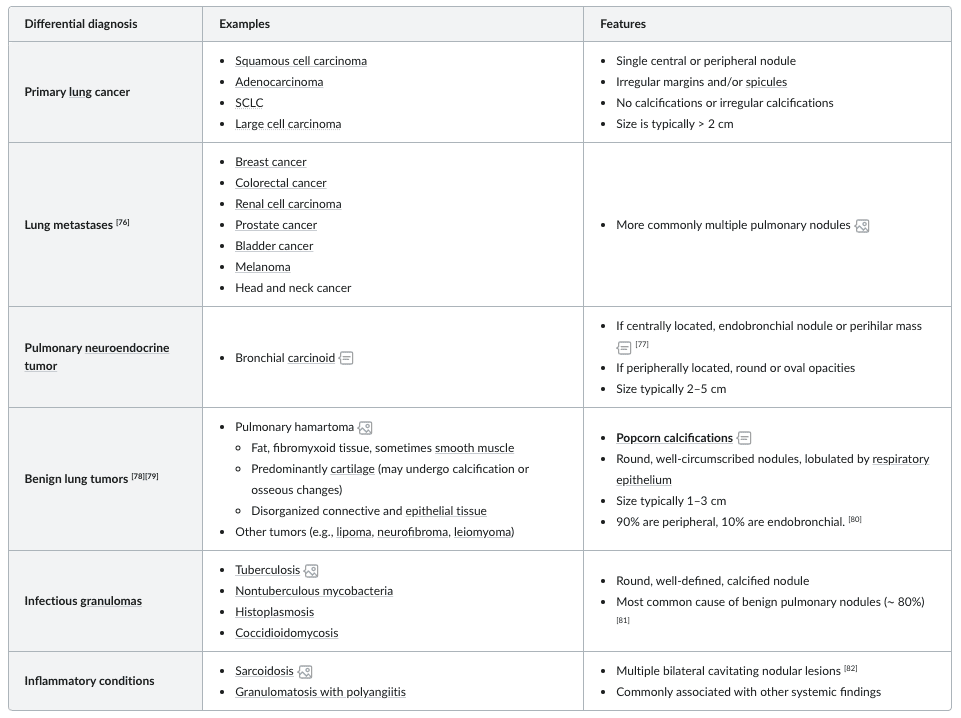Lung Cancer – Small Cell
Definition
Lung cancer comprises a group of malignant epithelial tumours arising from cells lining the lower respiratory tract. Lung cancer is divided into two categories: non-small cell lung cancer (NSCLC) and small cell lung cancer. SCLC accounts for more than 20% of all lung cancers.
They are responsible for paraneoplastic syndrome, as their cells contain neurosecretory granules that can release neuroendocrine hormones.
Risk factors
- cigarette smoking
- environmental tobacco exposure
- chronic obstructive pulmonary disease
- family history
- exposure to asbestos and other carcinogens
Differential diagnosis
- COPD
- Sarcoidosis
- Carcinoid tumour
- Pneumonia
- NSCLC
- COVID-19
Epidemiology
- There are around 48,500 new lung cancer cases in the UK every year, that’s more than 130 every day (2016-2018).
- Lung cancer is the 3rd most common cancer in the UK, accounting for 13% of all new cancer cases (2016-2018).
Aetiology
Approximately 45% of NSCLC are adenocarcinomas, which tend to be located more peripherally in the lung.
Clinical features
- Persistent cough
- Haemoptysis
- Night sweats
- Weight loss and anorexia
- Breathlessness
- Chest pain – chest wall involvement
- Non-resolving pneumonia
- Finger clubbing
Paraneoplastic presentations include:
Syndrome of inappropriate ADH (SIADH) caused by ectopic ADH secretion by a small cell lung cancer and presents with hyponatraemia.
Cushing’s syndrome can be caused by ectopic ACTH secretion by a small cell lung cancer.
Lambert-Eaton myasthenic syndrome presenting as weakness. It is as a result of antibodies produced by the immune system against small cell lung cancer cells.
Investigations
- CXR
- Contrast CT
- Sputum cytology
- Bronchoscopy
- Biopsy
- FBC, U&Es, LFTs
Management
Treatment regimens vary depending on the stage of cancer.

Prognosis
Survival after definitive treatment and on the stage of disease and ability to undergo standard treatment.
Comparison tables



